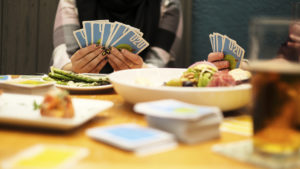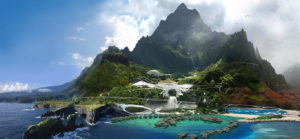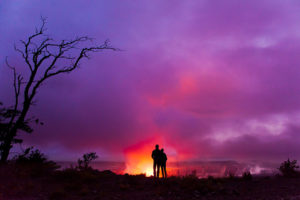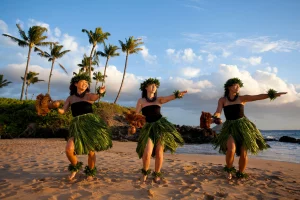BY KARYL GARLAND
Human beings have been finding ways to ride waves since they first entered the ocean. In fact, masters of the oceans’ waves can be found in almost every part of the world. Egyptians, Mesopotamians and Peruvians crafted boats out of reeds for wayfaring. From the Vikings of Scandinavia to the merchant traders of the Arabian Sea, supreme boatmen negotiated their travel in vessels perfectly suited to their needs.
Throughout the Pacific, more than 3,000 years ago, island peoples fashioned voyaging canoes allowing them to travel thousands of miles using elements such as the wind, sky and stars to guide them. Thought to have originally come from Southeast Asia, Polynesian voyagers discovered and populated the uninhabited islands of Samoa and Tonga. These peoples would eventually sail east encountering the Marquesas Islands and Tahiti. Then, in two separate and distinct expeditions, the Marquesans and the Tahitians sailed north in double-hulled voyaging canoes locating a chain of islands in the middle of the Pacific Ocean—a place that would come to be known as Hawai‘i.
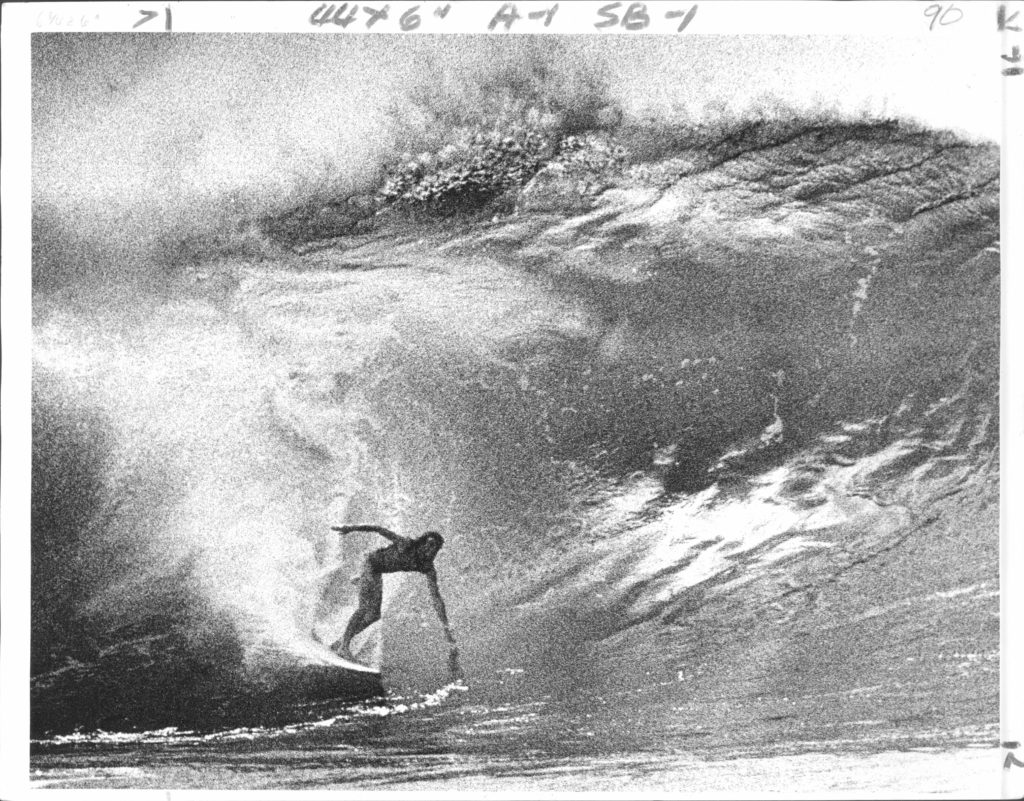
Over the course of centuries, Polynesian peoples traveled to and from Hawai‘i spanning an oceanic area larger than the Atlantic Ocean and the Indian Ocean combined. However, they mastered the movement of the waves not only in sailing vessels but also on carved wooden planks, the most pristine of which were crafted by Hawaiians who rode the finest variety of waves, most accessible from shore, with optimal wind and weather to compliment any ride.
Surfing for early Hawaiians was more than just a pastime or sport. It was an activity enjoyed by young and old, male and female, and ali‘I (chiefs) and maka‘ainana (commoners). Since western contact, surfing has been coined “the sport of kings” because even the highest chiefly class rode waves, customarily upon an olo—a longer board as compared to the shorter boards such as the kiko‘o, alaia, and papio. Prime surf breaks were strictly reserved for ali‘i with the activity wholly interwoven into the daily practice, lives and legends of the Hawaiian people.
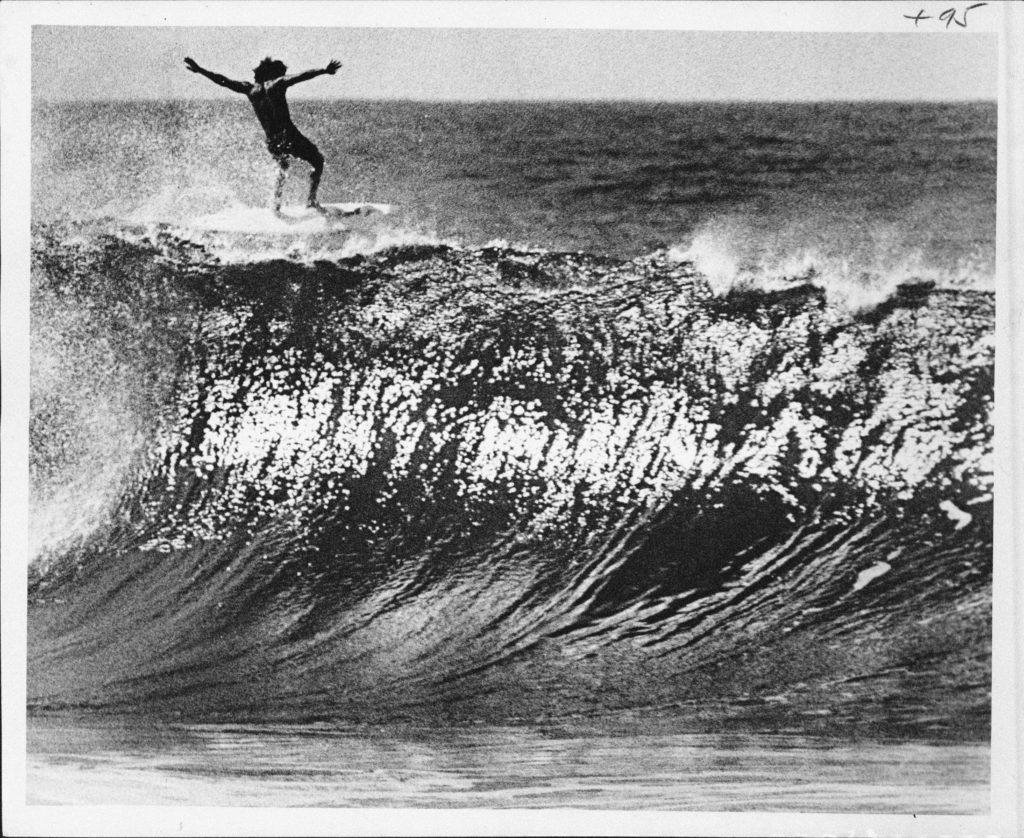
The creation of a surfboard, along with that of a canoe, existed as a sacred practice. It began with a pule (prayer) directed toward a specific tree, primarily wiliwili, kukui, or koa. The tree was selected and felled and then carved and smoothed with adze and coral and conditioned with kukui oil, by a master carver, so as to prepare it for he‘e nalu, “wave sliding.”
Westerners would eventually find their way to Hawai‘i—Captain Cook in the 1700 and American missionaries and sailors, with the whale era, in the 1800s. Herman Melville, Mark Twain and Robert Louis Stevenson also spent time in the islands in the 1800s. As such, the world would come to have the first recorded descriptions of the practice of surfing.
Largely influenced by the objections of missionaries, traditionally central elements of Hawaiian society saw significant decline over the course of decades. However, in the early 20th century, a new generation of surfers began to revive wave riding while bringing innovation to surfing techniques and board design.
In California, between World War I and World War II, surfing boomed. Master waterman, Olympian, and “Ambassador of Aloha” Duke Kahanamoku shared his surfing expertise everywhere he travelled and is credited with bringing the sport to both California and Australia, specifically with a ride at Sydney’s Freshwater Beach on December 14, 1914. Kahanamoku, having been proclaimed “Surfer of the Century” by Surfer magazine in 1999, is celebrated today as the father of modern surfing.
Surf clubs would be proposed and launched, with riders such as Dale Velzy creating their own distinct styles and mantras. In the mid-fifties, Californians would head to Hawai‘i specifically to hit the huge surf. Winter of 1955 brought three surfers, George Downing, Wally Froiseth, and Woody Brown, to Makaha Point, and a photograph taken that day memorializes their collective charging across a giant wave.
The 1950s and 1960s also brought surfing to song and screen. The Gidget films glamorized the West Coast surfing lifestyle. The Beach Boys’ Surfin’ USA, released in 1963, made them a world-wide musical sensation. And surf movie producer Bruce Brown created The Endless Summer in which he imagines that, if people had enough money and time, they could literally follow a summer of surfing around the world.
Surfing literally went global in the 1960s with the movies and magazines spreading the word about surfing in Mexico and South Africa. Surfing contests were happening, the first World Championship taking place in Peru in the summer of 1965. Australians, along with a host of Hawaiian and Californian wave riders, were invited to compete, and Peruvian Felipe Pomar was crowned champion.
The influence of skateboarding in the ’70s accompanied the rise of the shortboard era with hotdog surfers like Larry Bertlemann and Hawaiian revolutionary Buttons Kaluhiokalani, along with Australians like Rabbit Bartholomew and South Africans like Shawn Thompson, staking wave claims. Hawai‘i’s Gerry Lopez, once known as “Mr. Pipeline” for his mastery of the break, is largely attributed for the rise of surfing in Indonesia. In addition, these years brought the beginning of the world surf tour, accompanied by an affection for puka shell necklaces.
The 1990s into the 2000s would see epic competition among surfing legends like Andy Irons and Kelly Slater. North Shore, West Side and Jaws on Maui, with the aid of jet skis and Ocean Safety when needed, allowed for tow-in surfing by masters such as Archie Kalepa, Brian Keaulana, Derek Doerner and Laird Hamilton. Names consistently rising to the surface within the men’s World Surf League competitions today are Hawai‘i’s John John Florence and Brazil’s Gabriel Medina.
However, it is important to understand that women have always been wave riders, and through the decades as surfing continued to move toward the forefront of watersports, so did chicks on boards. Women such as Margo Godfrey and Joyce Hoffman stormed the surf scene in the 1970s. Rell Sunn, the “Queen of Makaha,” pioneered women’s surfing and, in 1977, became O‘ahu’s first female lifeguard. By 2008, Australia’s Layne Beachley had won the World Championship seven times.
In September of 2018, having arrived on the Championship tour with a fury in 2010, three-time world surfing champion Carissa Moore found herself back on top of the podium taking first place for the eighth event on the World Surf League Women’s Championship Tour. The competition was a historic first as it took place at Kelly Slater’s Surf Ranch, a unique artificial wave pool 100 inland miles from the ocean.
One thing is for sure: surfing is here to stay. But where is “here?” Here is everywhere around the entire world wherever waves can be found and souls can be cleansed. Styles adapt as they define locations and eras, wetsuits and boards are designed and redesigned, fins are added and moved with pristine wave riding continuing to be an ultimate goal of watermen and waterwomen throughout the Pacific and beyond.

